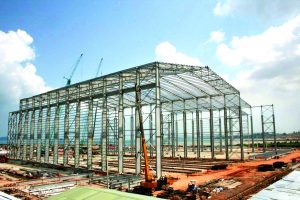
A typical steel building
The very first use of steel building dated back to the late 19th century, when the best constructors of Chicago, Paris and London are seeking a solution for severe cracking problems of brick, stone and terracotta buildings all over Europe and North America. Steel buildings were since then proved to be excellent alternatives for conventional building solutions, which became more and more expensive and disruptive.
The 20th century saw the development of the metal industry and brought an abundant availability of steel to the market, leading to the prevalence of steel buildings, especially after World War II. The use of steel buildings was then significantly expanded due to its flexibility and cost efficiency, and has become the trend in the mid-20th century’s construction.
Pre-fabricated buildings were first introduced in 1960s, when manufacturers got the ideas of pre-making all the components including roof, floor, frame walls, bracing, etc. Constructors just need to put these parts together to make a building stand, while the first computer aided design program for steel building was also created in the 1960s, allowing steel buildings to be made with a variety of designs, features, shapes and sizes and most importantly, safer& faster to construct.
Today, steel building is the most flexible solution in the modern world of construction, thanks to its proven significant benefits:
- Produced , engineered and constructed faster than conventional building
- Resistance to climate changes and natural disasters
- Light in weight but have more tensile strength, and can be used together with other construction materials
- More flexible in terms of designs and applications
- Cost-saving
- Environment-friendly and NO WASTE